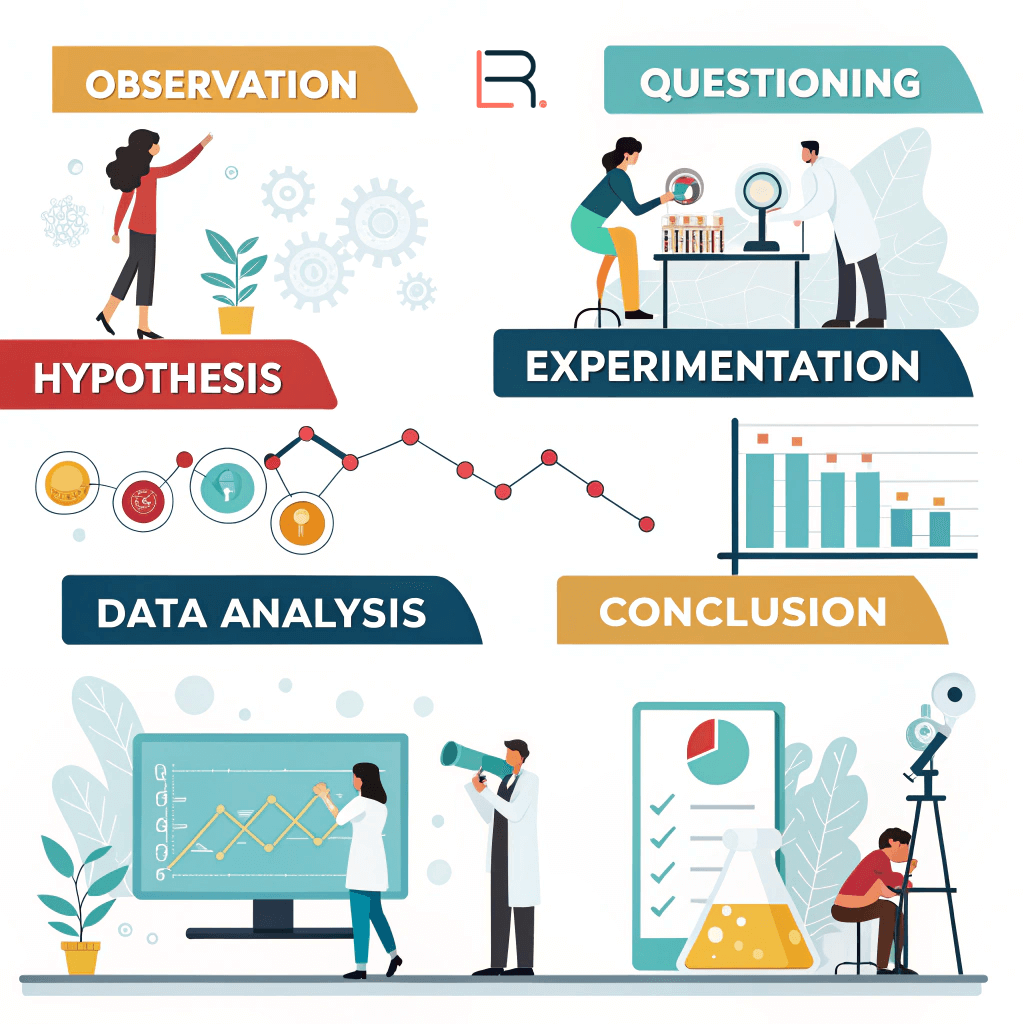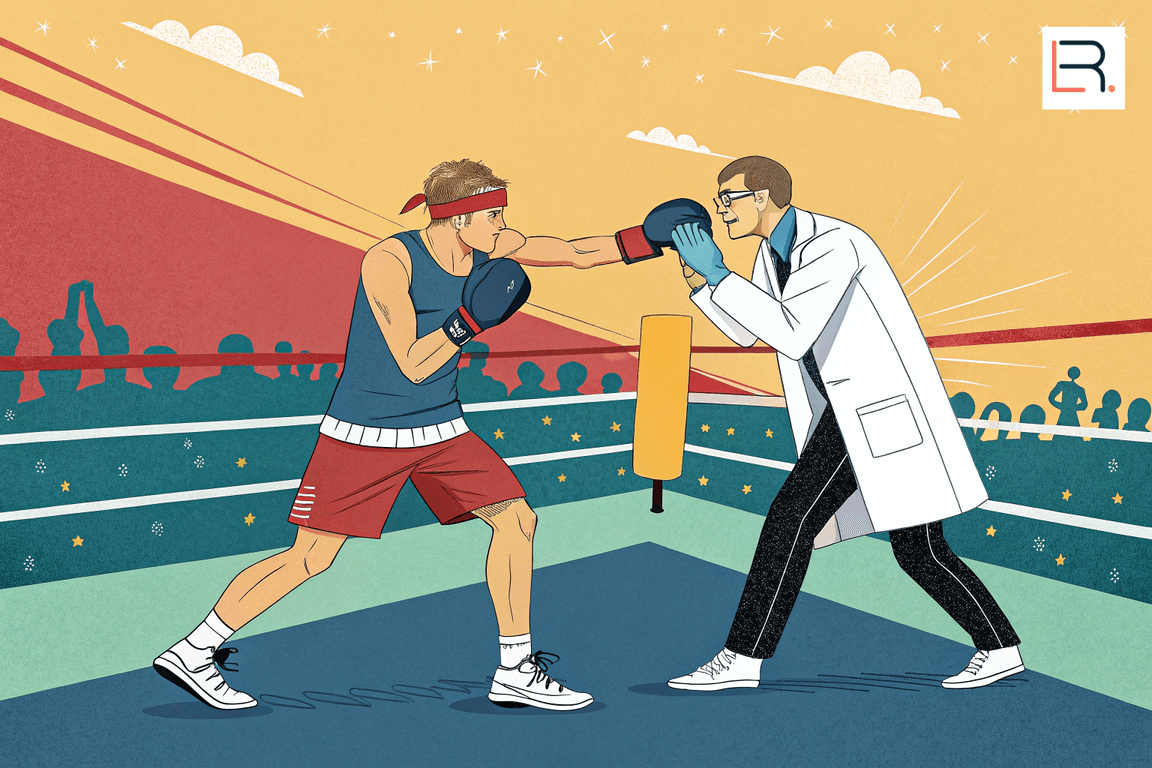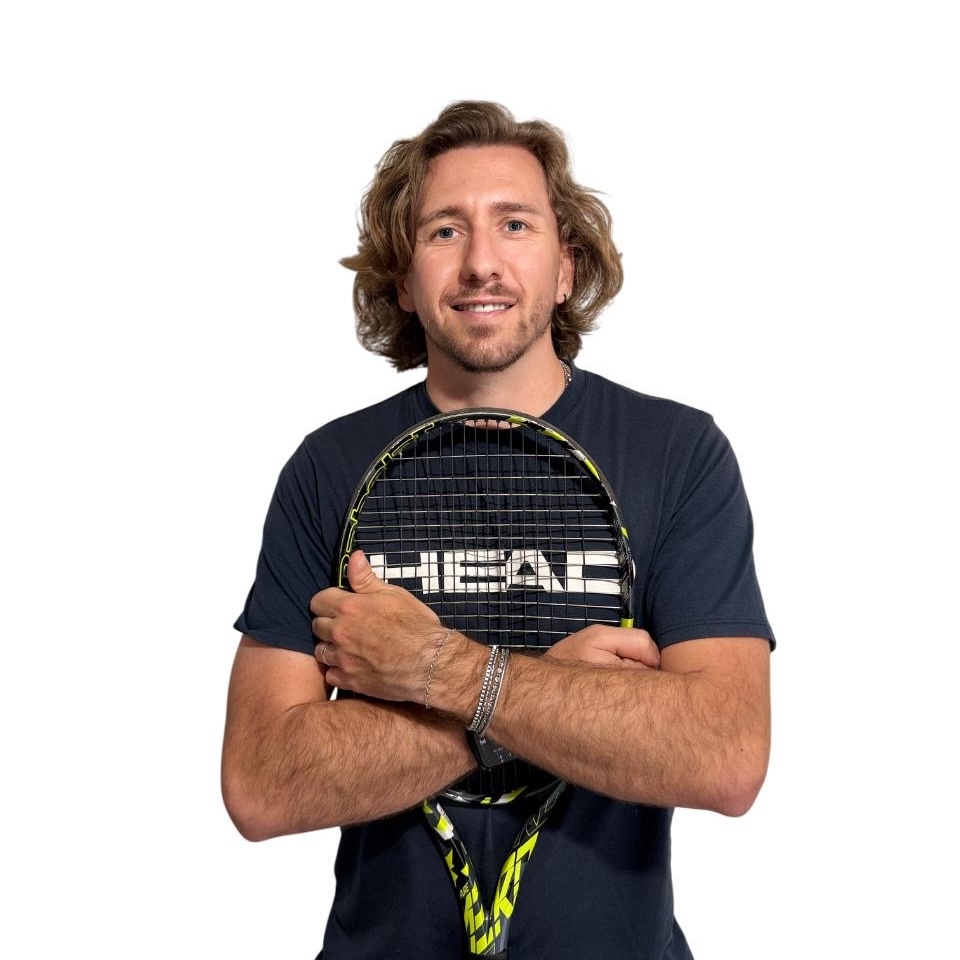6 Steps to Become a Tennis Scientist
It’s 3 p.m. in Palma de Majorca as I sat across from my fellow coach in a small restaurant, picking at my pizza while he shared a private conversation that would change my beliefs.
"You won't believe how he got to the top," he said, leaning forward conspiratorially. "I was talking to this legendary coach—I can't name names—but he told me something fascinating. Back in the '90s, he became one of tennis's first sport data analysis pioneers, long before it was even considered a real profession. He was travelling from tournament to tournament collecting numbers—he discovered that all data published until then was a lie."
That conversation haunted me for days. I couldn't stop thinking about the invisible war happening across tennis courts worldwide: the battle between old-school coaches and modern sports scientists, each convinced they held the key to unlocking player potential.
The Great Tennis Divide: Experience vs. Evidence
Picture this clash as a championship boxing match. In the red corner stands the veteran coach—weathered hands telling stories of thousands of hours spent on courts in blazing heat and freezing rain. Their expertise was forged through decades of trial and error, watching players rise and fall, developing an intuitive sense for the game that can't be taught in any classroom.
In the blue corner: the sports scientist, armed with fresh research, statistical models, and performance metrics. They promise to predict player success through data analysis, challenging long-held coaching beliefs with peer-reviewed studies and biomechanical breakdowns.
Who's better—the old-school tennis coach or the modern sports scientist?
This debate has raged for years. Traditional coaches trying to ignore science based coaching approaches that seem to invalidate their hard-earned wisdom. Meanwhile, sports scientists sometimes dismiss experiential knowledge as outdated folklore.
But here's what I've learned after years of bridging both worlds: this isn't about choosing sides. It's about evolution.
The Tennis Scientist Revolution: Where Art Meets Science
The truth is, you don't need a PhD to become a tennis scientist. What you need is something far more valuable: the courage to question everything you think you know about tennis teaching methods and the discipline to test your assumptions systematically.
A tennis scientist isn't defined by their degree—it's anyone who approaches coach development through a scientific lens, guided by curiosity rather than certainty. They follow the 6 steps scientific method:
Observation → Questioning → Hypothesis → Experimentation → Data Analysis → Conclusion
Let me show you how to transform your coaching using this framework.

Step 1: Build Your Coaching DNA - The Foundation Pillars
Tennis, with its infinite variability, can be approached from countless angles. The key isn't being universally right—it's being strategically focused. This is where many coaches stumble: they try to be everything to everyone instead of mastering what matters most.
I learned this lesson the hard way when I first started coaching. I was like a kid in a candy store, trying every new technique and theory I encountered. My students were confused, my sessions lacked coherence, and my results were inconsistent.
Everything changed when I forced myself to choose just three core concepts as my coaching pillars. Think of these as your coaching DNA—the fundamental beliefs that will guide every decision you make on court.
The scientific approach: Don't just pick concepts that sound good. Validate their foundation through research. Use platforms like Google Scholar to find peer-reviewed studies that support your chosen pillars. If you can't find scientific backing, you're building on quicksand.
Step 2: Design Your Laboratory - Creating a Strategic Training Program
Now comes the exciting part: turning your pillars into practice. Imagine meeting a new student for the first time. With only your three pillars as guides, what would your weekly tennis program look like?
This is where science based coaching becomes an art form. You're not just planning drills—you're designing experiments that test your hypotheses about player development.
The creative imperative: Don't be afraid to look different. Some of the most effective training methods initially seem unconventional. Remember, you're trying to solve problems that traditional approaches haven't fully addressed.
Consider limiting yourself to 1-2 core topics per training session. While many coaches default to tactical zones (neutral, defensive, attacking positions), you might explore player archetypes (counterpunchers, serve-and-volleyers), cognitive challenges, or coordinative abilities.
Step 3: Become a Data Detective - Collecting Player Intelligence
Here's where sport data analysis transforms from abstract concept to practical tool. Every player carries different biometrics, movement preferences, learning styles, motivational triggers, attention patterns.
The key is collecting data that aligns with your coaching pillars. If one of your pillars focuses on movement efficiency, prioritise biomechanical measurements. If you emphasise tactical intelligence, track decision-making patterns under pressure.
The systematic approach: Create a comprehensive spreadsheet template that captures metrics relevant to your tennis philosophy. This isn't busy work—it's the foundation of personalised player development.
I learned this during my early coaching days when I assumed my "perfect" training program would work for everyone. Reality hit hard when two equally talented 14-year-olds responded completely differently to identical instruction. The data helped me understand why.
Step 4: Crack the Code - Identifying Performance Variables
Here's a fundamental truth: whatever program you create won't work for every player. The magic happens when you discover why.
Variables are the hidden factors that separate players into distinct categories. Think of them as performance fingerprints—unique combinations of characteristics that determine how someone moves, learns and competes.
Take the current fascination with mixed versus unilateral dominance. This single variable can dramatically influence which teaching methods will be most effective.
The strategic insight: Not all variables carry equal weight. Some factors significantly impact tennis performance, while others are merely interesting observations. Your job is identifying which variables matter most for your specific tennis teaching method.
Step 5: The Eureka Moment - Data Analysis and Program Evolution
This step feels like solving a complex puzzle while balancing on a tightrope. You're analysing patterns in your data, looking for correlations and insights that will refine your coaching approach.
The process can be humbling. Data might reveal that your favourite drill doesn't actually improve the skill you thought it targeted. Or you might discover that your most successful students share characteristics you never noticed consciously.
The mindset shift: Stay attached to results, not methods. Some coaches become emotionally invested in specific techniques or drills. True science based coaching requires the courage to abandon methods that don't serve your students, even if you love them personally.
I once spent months developing what I thought was a revolutionary serve training progression. The data showed it actually decreased serving accuracy for most players. It hurt to scrap months of work, but my students' improvement accelerated once I admitted my approach needed fundamental changes.
Step 6: The Never-Ending Journey - Continuous Evolution
Scientific inquiry never ends with a single experiment. The most successful coach development happens through repeated cycles of testing, analysing, and refining.
This iterative process can be addictive. Each cycle reveals new questions, unexpected patterns, and opportunities for improvement. Your coaching framework becomes a living system that evolves with every student, every session, every insight.
The long-term perspective: Perfect doesn't exist in tennis coaching. What exists is constant improvement driven by curiosity, data, and the willingness to admit when you're wrong.
True scientists remain ready to revolutionise their understanding when presented with compelling evidence. Your coaching should embody this same intellectual flexibility.
The Verdict: Bridging Two Worlds
I'll never forget a university workshop from my sports science days. Our professor, also a football coach, began with a detailed lecture about energy systems and muscle reflexes—fascinating material about injury prevention and athletic performance.
But here's what I remember most: despite the valuable content, the room felt lifeless. Students were checking phones and staring at the clock.
This experience taught me that the future belongs to professionals who can blend rigorous sport data analysis with the human artistry that makes coaching magical.
In our era of YouTube tutorials, coaches must offer something uniquely valuable. Science based coaching isn't about replacing intuition with spreadsheets—it's about sharpening your intuition with evidence.

Your Scientific Journey Starts Now
Building a tennis teaching method grounded in science doesn't happen overnight. It requires the patience of a researcher, the creativity of an artist, and the humility of a lifelong student.
But the rewards extend far beyond winning matches or improving technique. You'll develop a coaching identity that's uniquely yours, backed by evidence but guided by passion. Your students will benefit from methods that are both proven and personalised.
Most importantly, you'll join a growing community of tennis professionals who refuse to accept "that's how we've always done it" as a sufficient answer.
What are your three coaching pillars?
If you're ready to begin developing your own science based coaching framework, or if you want to dive deeper into any aspect of this transformation, I'd love to help you start your journey. Reach out at hello@riccardoleone.org—let's turn your coaching wisdom into scientific gold.
